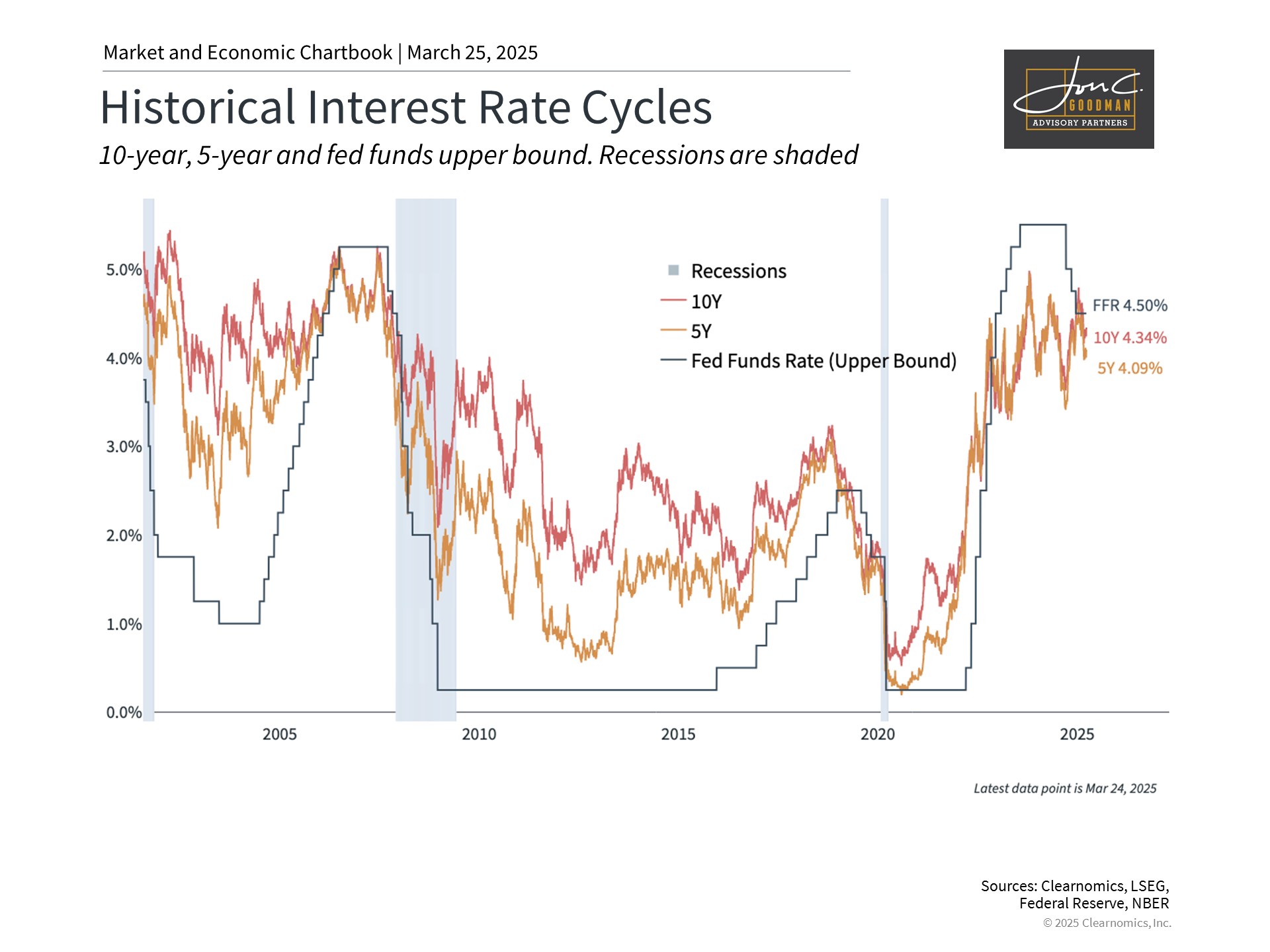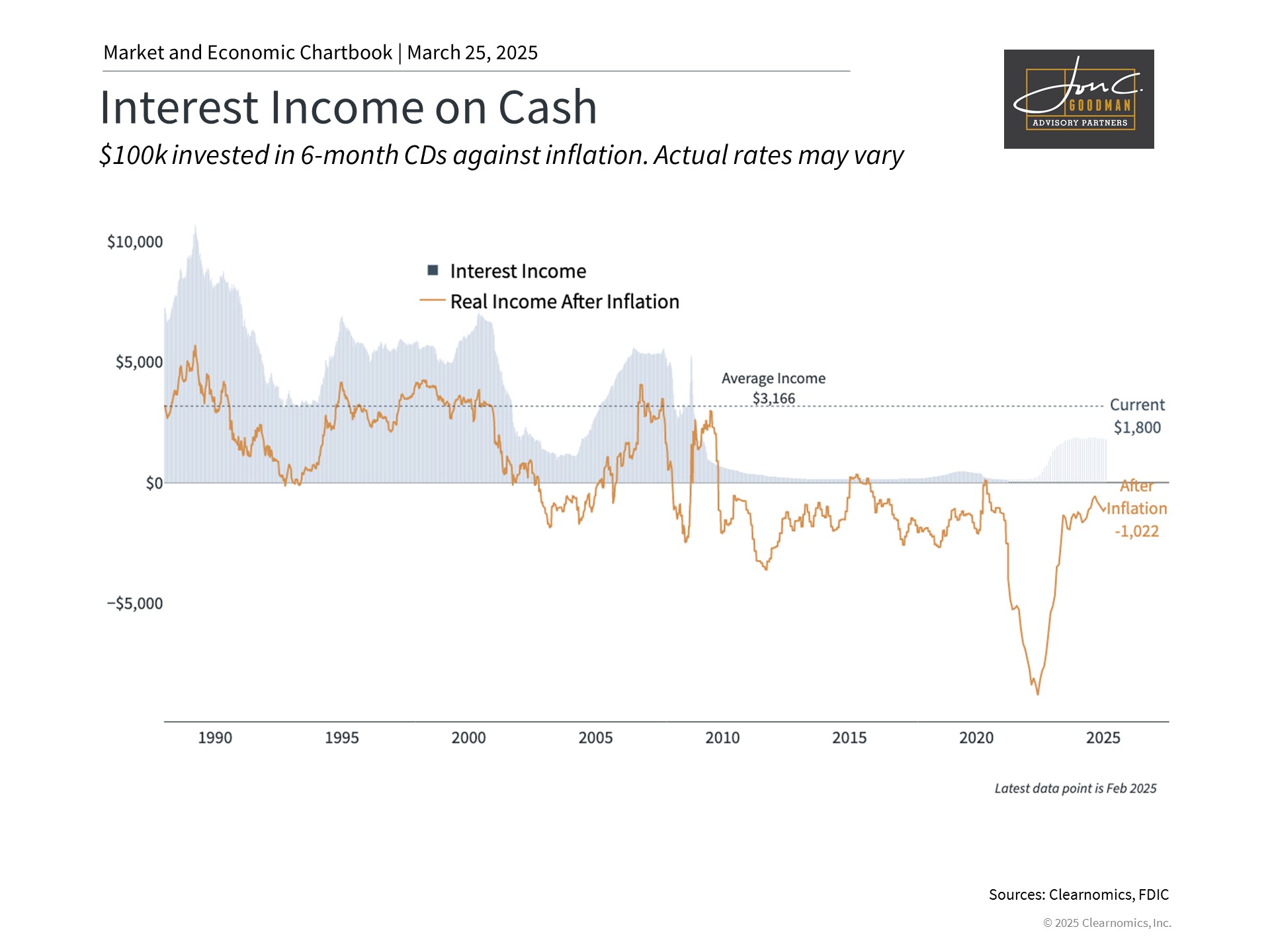In recent years, Federal Reserve decisions have significantly influenced market movements. The Fed’s policy shifts, from aggressive rate hikes in 2022 to rate cuts last year, have created notable market reactions. Now in 2025, as the Fed maintains steady rates despite various economic pressures, investors are seeking to understand both the reasoning behind this stance and its implications for their portfolios.
Current Fed policy reflects economic complexities.

The Federal Reserve’s congressional mandate focuses on two key objectives: maintaining price stability and maximizing employment. This dual mandate drove the Fed to raise rates aggressively when inflation surged in 2022, followed by rate reductions in 2024 as price pressures moderated. While many feared that controlling inflation would require significant economic sacrifice, those concerns didn’t materialize.
Recent economic indicators present a mixed picture. The Fed’s March meeting revealed reduced growth projections, with 2025 GDP expected at 1.7%, down from 2024’s 2.5% figure. This would mark the lowest growth since 2022’s inflation-challenged environment. Rising inflation expectations and unemployment concerns contributed to this cautious outlook.
Despite these challenges, the Fed maintains its current rate position. They distinguish between temporary price impacts, such as potential tariff effects, and broader inflationary pressures. While tariffs might cause specific price increases, as seen with washing machines in 2018, these differ from economy-wide inflation pressures.
The Fed’s measured approach also reflects positive economic indicators, including robust employment figures and steady wage growth. Chair Powell noted the sometimes contradictory nature of economic data, where consumer sentiment may not align with actual spending patterns. Currently, all major inflation measures exceed the Fed’s 2.0% target, contributing to market volatility.
Rate cut expectations remain for 2025.

Looking forward, both the Fed and market forecasts anticipate two to three rate cuts in 2025, suggesting confidence in gradual inflation improvement. These projections, however, can shift rapidly. Consider how 2024 began with expectations of seven to eight cuts before settling at three actual reductions.
The Fed’s recent announcement to slow its balance sheet reduction represents an additional form of economic support. This modification to the quantitative tightening program effectively provides market stimulus even without rate cuts.
For long-term investors, the broader trajectory of monetary policy matters more than individual rate decisions. Historically, declining rates have supported economic growth by reducing borrowing costs for businesses and consumers.
The hidden risks of excessive cash holdings.

Market uncertainty often drives investors toward cash positions. While this may feel safe, maintaining excessive cash can undermine long-term financial success. Markets frequently recover during periods of peak pessimism, making it crucial to maintain appropriate investment exposure.
Even with higher nominal yields, many cash investments provide negative real returns after accounting for inflation. The erosion of purchasing power can significantly impact long-term wealth preservation.
While cash serves important short-term purposes, it rarely supports long-term financial objectives effectively. Despite ongoing uncertainties around recession risks, trade policies, and monetary policy, maintaining a strategic long-term investment approach remains crucial.
The bottom line? The Federal Reserve maintains a balanced approach amid complex economic conditions. Investors should similarly focus on long-term objectives rather than reacting to short-term developments. Historical evidence supports maintaining strategic investment allocations through market cycles.
To schedule a 15 minute call, click here. (https://calendly.com/jcg4114/schedule-a-call-1)
